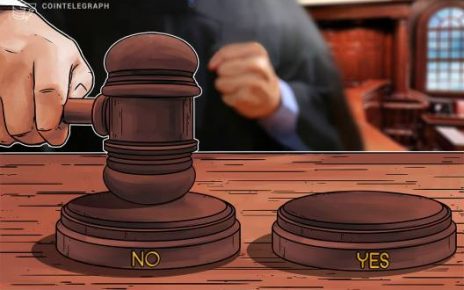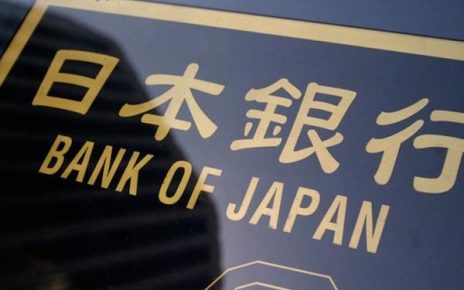Nicolás Maduro, the President of Venezuela, announced the launch of a national cryptocurrency called Petro on December 3rd, 2017. A few days later, on December 8th, the president announced the creation of the Superintendency for Cryptocurrencies and related activities and Carlos Vargas was appointed as the director of this governmental institution whose goal is to regulate the cryptocurrencies and associated activities.
It was announced that Petro would be backed up by the oil reserves of Venezuela and the start of the presale was scheduled for February 20th, 2018. When the presale commenced, it attracted a lot of attention from media and people around the world.
The acronym of Petro is $PTR and 100 million coins will be emitted, backed up by 5,300 million barrels of oil located in the Ayacucho block of the Orinoco oil belt. The presale will conclude on March 19th, 2018. After the presale, an official initial coin offering (ICO) will start.
According to the published whitepaper of Petro, the token uses the ERC-20 protocol of the blockchain network of Ethereum. However, the user manual published when the presale has started says the operations of Petro are based on the blockchain network of NEM.
A few hours after the presale has begun, the President Maduro assured that the purchase intent reached 735 million US dollars, although this number could not be corroborated due to the lack of an official smart contract for Petro. Later, Maduro and the Vice President Tareck El Aissami held a Facebook Live session in which they announced the purchase intent rose to more than one billion dollars. Maduro said the following during the session: “There have been 292,000 purchase intention offers, out of which 36% in US dollars, 15% in euros, 18% in Ethereum and 31% in Bitcoin. 950,000 people accessed the website of Petro today to download information about the cryptocurrency.”
The whitepaper of Petro says 38.4% of all the coins will be emitted during the presale, 44% during the upcoming ICO, while 17.6% will be owned by the Superintendency for Cryptocurrencies and related activities. The raised funds will be destined to the following sectors: 15% for technology, 15% for the Petro ecosystem, 15% for the project and 55% will go to a sovereign fund whose goal has not been announced yet.
The President of Venezuela assured that the government had meetings with members of the NEM project to make the Petro project stronger, but representatives of NEM denied this claim. Alex Tinsman, the Global Director of Communications at NEM.io Foundation said the following: “The NEM Foundation is not involved with this project and we’re not in a position to control any open source projects. The NEM Foundation has a clear purpose to introduce, educate and promote the use of the NEM blockchain technology platform on an international scale to all industries and institutions. Really, it doesn’t take much to learn how to use NEM’s tech. It’s intuitive and built for enterprise so we see all kinds of projects being built on it. I believe the Aero Trading team is working on a press release regarding this project.”
At the moment, the token does not have a smart contract in the NEM blockchain, nor in the Ethereum blockchain network and since the authorities have been silent, a series of frauds associated with Petro proliferated in the meantime. According to Etherscan, there are at least 11 different tokens with the same acronym as Petro, PTR, in the Ethereum blockchain network. Moreover, there are Twitter accounts offering advisory services for the purchase of the Venezuelan cryptocurrency.
Petro is supposed to have its own blockchain network based on the blockchain developed by Decred. Nevertheless, there are no more details about this and the current whitepaper does not mention this topic.
Petro is a premined cryptocurrency and its blockchain should use the Proof-of-Stake (PoS) algorithm for mining. Since it will be a federated blockchain network, the nodes in the network will be controlled by the government and certain financial institutions, probably associated with the Venezuelan government. This will make the Petro blockchain a centralized network.
The National Assembly of Venezuela declared petro as unconstitutional. Legal consequences of this decision are yet to be seen since the National Assembly is not in good relations with the Venezuelan Supreme Tribunal of Justice. The National Assembly allegates that, according to the constitution of Venezuela, the national oil reserves cannot be alienated.
Moreover, the Department of the Treasury of the United States of America (USDT) assured that all US citizens who decide to invest in Petro will be exposed to sanctions.
Despite being a premined cryptocurrency, the Venezuelan government revealed a plan for the development of cryptocurrency mining activities in the country to fight the economic crisis in the country. The main problem for the mining of cryptocurrencies in Venezuela is the lack of electrical power in some regions of the country. The mining activities could make this problem worse since they consume huge amounts of electrical energy.
The government started issuing mining certificates as an intermediary step in the process of obtaining a license to perform cryptocurrency mining activities in the country.
More insecurities regarding the Petro project are generated by the lack of cryptocurrency exchanges that would accept to list Petro, since there are almost no details about this topic. The President Maduro insists progress is being made in this field, but a list of cryptocurrency exchanges that would list Petro has not been published yet.
According to some local media associated with the government, the government is negotiating with 36 cryptocurrency exchanges to list Petro, but no details have been published about these negotiations.
After the presale has started, Maduro also assured that Petro would convert into a method of payment in various areas of the national economy. Companies such as Petróleos de Venezuela (PDVSA), Petroquímica de Venezuela (Pequiven) and the Corporación Venezolana de Guayana (CVG) will perform trading operations with Petro, after an order from the Venezuelan president.
The president also said Petro would be used for payments in the tourism industry, for the consular services and airline tickets. Moreover, the sale of fuel on the border with Columbia will also be performed with Petro. He added the state savings banks would get special permissions to acquire Petro to protect the savings of the workers.
Right after the presale of Petro was launched, the Venezuelan government announced another cryptocurrency. It is called Petro Oro and will be backed up by the gold reserves of the country. The launch of Petro Oro is scheduled for this week. It has not been made clear whether the new cryptocurrency would be backed up by the already exploited gold reserves or by the unexploited reserves.
The investors interested in obtaining Petro can visit the official website of the cryptocurrency where they can download the user manual and follow the steps explained there. The document explains the steps to download the digital wallet where the coins would be stored, although it does not explain the process of obtaining and exchanging Petro.
Despite the huge attention from the media, there are many negative opinions about the first Venezuelan cryptocurrency. Many people doubt that government has the capacity to manage the new cryptocurrency well. Some political activists accuse the government and other officials of using Petro to launder money at the cost of the oil reserves of the country.
The lack of confidence in the Petro project raises suspicions and despite the fact that the government insists it would solve the economic problems in the country and help the national currency, the bolívar, it is extremely strange that Petro cannot be bought with bolívars.




